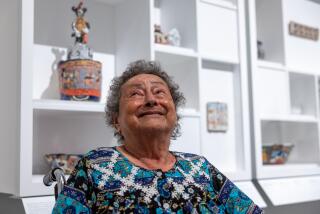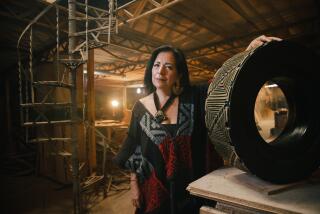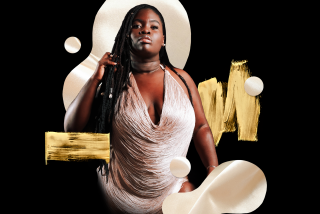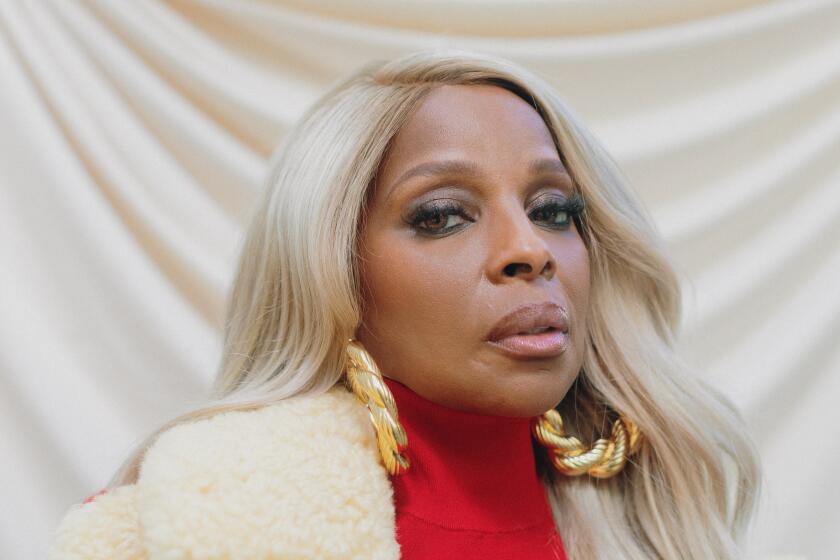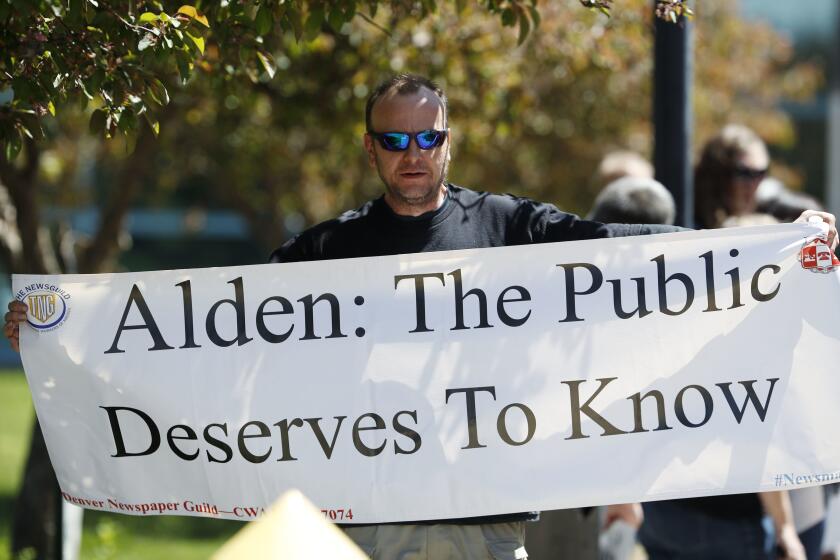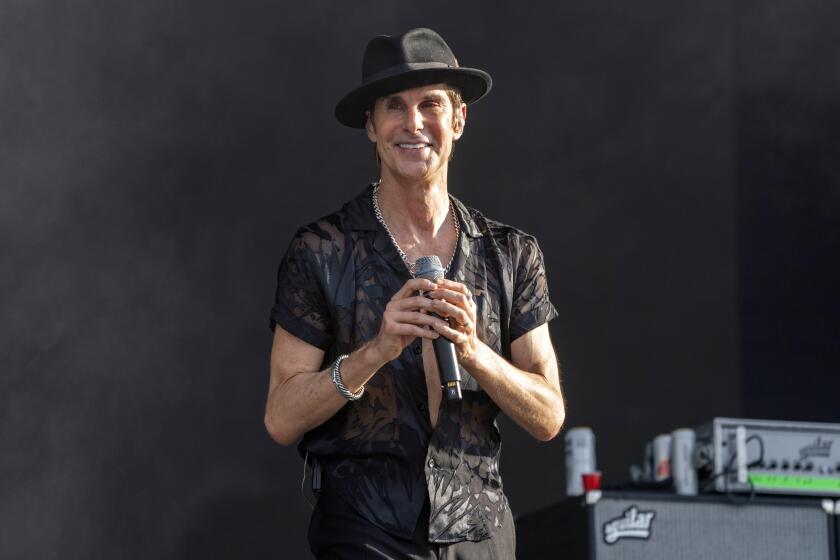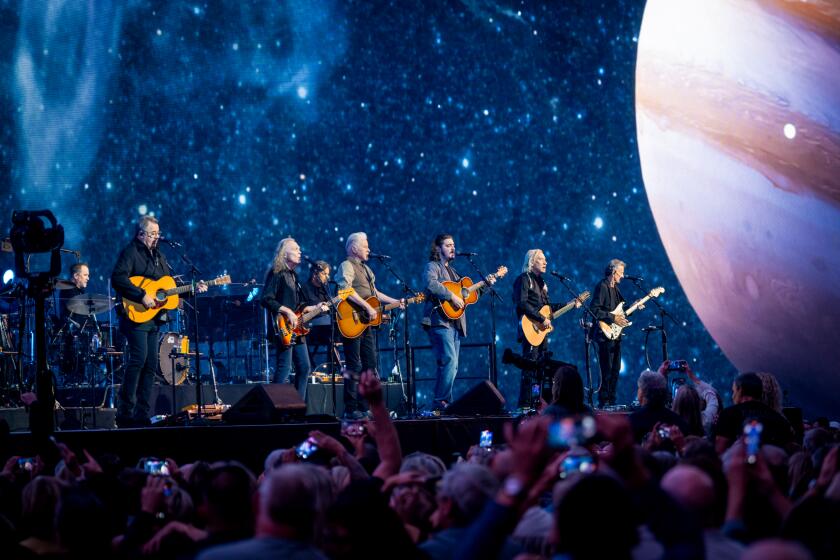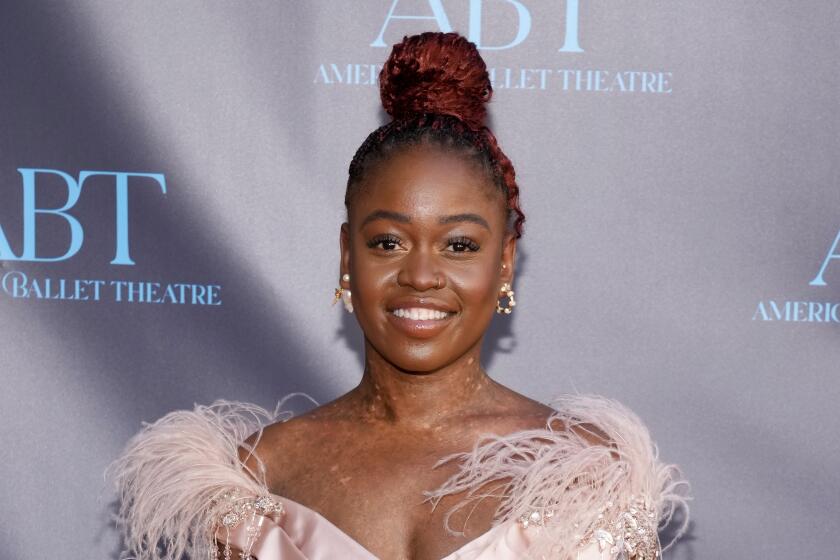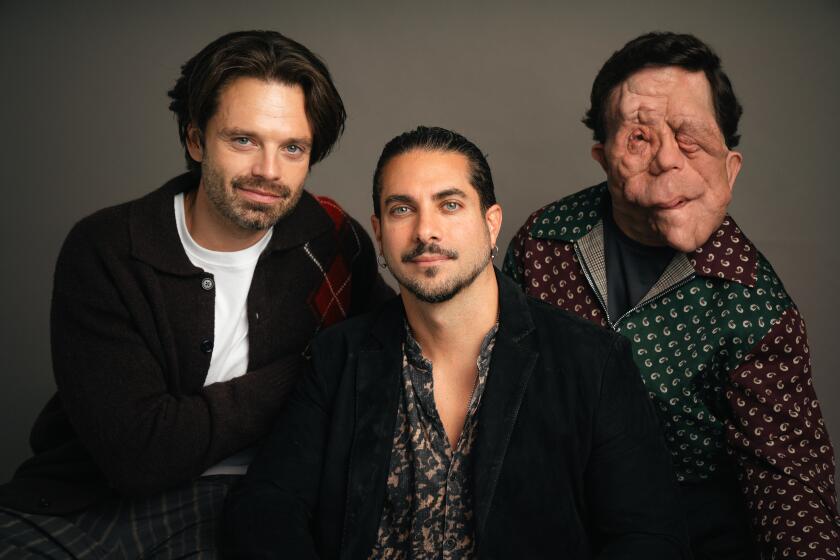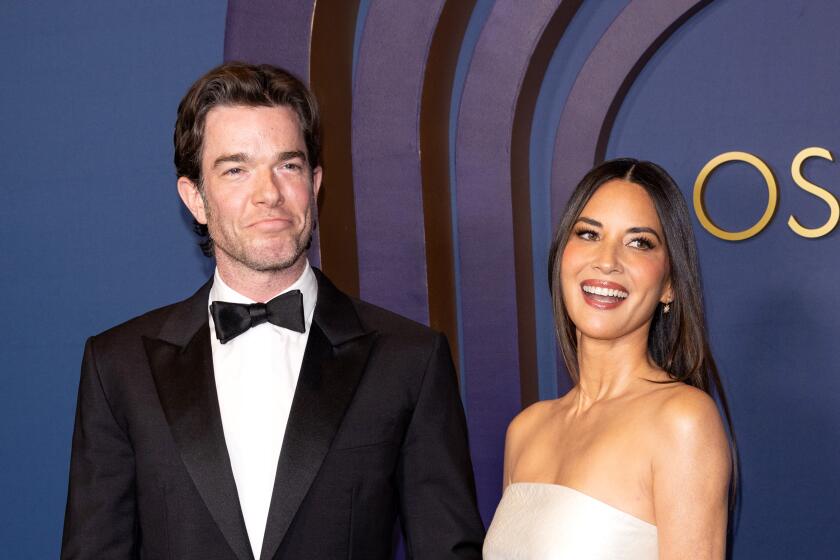Q&A: Tania Bruguera on her art, her detentions and what happens next
Cuban performance artist Tania Bruguera has never been one to shy away from controversy. But her attempt to stage a performance related to free speech in Havana’s Revolution Square last week led to her being detained on multiple occasions. It also led to the detention of various other cultural figures and activists.
These incidents generated a condemnation from the U.S. State Department, as well as plenty of critical opinion pieces from art world figures on both sides of the U.S.-Cuba divide. (I’ve written a separate story about the general uproar the performance has caused.)
The thwarted piece, titled “Tatlin’s Whisper #6,” consists of a podium and a microphone which members of the public are allowed to use to express themselves for one minute each. Interestingly, it had been staged once before in Havana without incident, for the Havana Biennial in 2009, video below. For this edition, Bruguera wanted to take the piece to the Cuban capital’s iconic Revolution Square — under the hashtag #YoTambienExijo (I Also Demand) — but was denied permission to do so. Even so, she persisted, and announced that the performance would continue as planned. Hours before it was scheduled to happen, however, she was picked up by state security agents.
Much has been written about this case, but I was curious to hear from the artist — who lives and works primarily in the U.S. and Europe — herself. On Tuesday afternoon I managed to reach Bruguera by phone at her home in Havana, where she took time out for a lengthy chat. She discussed her detentions, the state of art in Cuba, the privileges her status as an international artist has afforded her and the art history lesson she gave to a member of the country’s state police.
Here is a condensed and edited version of that conversation:
Was your plan to go to Cuba simply to stage this performance?
No. I had my ticket a few months ago. I had already planned to be here with my family for two weeks. Then the news [of the resumption of diplomatic relations] happened. There was the announcement and I did an open letter to [President] Obama and [Cuban leader Raul] Castro and the pope. And I mentioned the idea of doing the piece in the Plaza de la Revolucion. That’s when I came away with the intention.
So what did you think when you heard about the resumption of diplomatic relations between the U.S and Cuba?
Happiness. Any time that two countries that are enemies become friends is a political victory for everybody. It’s such a big historical moment. But immediately I also thought that there needs to be some sort of transitional emotional process. After 50-some years of describing someone as your enemy, you can’t turn around and say, “We’re friends!” A lot of people have made sacrifices for this. There are people who didn’t speak to their families in Miami for fear of losing their jobs. When this opens up, the bureaucrats and the people in power will benefit. But what happens to the people who made so many sacrifices in the name of the revolution? You can’t just say, “Great, thanks so much. But you can forget about all of that now.”
How do you see what you’re doing as art?
For me, this is “Arte de Conducta” — Behavior Art — and it’s a piece that is decided not by the artist but by a political condition. It was like a test to see how ready everyone was to create a new behavioral dynamic. Right now, people have an on/off button that they turn on and off when something like this happens. I wanted to change that reaction. I wanted to prove that people could talk peacefully, that they could be tolerant of different opinions and that the police would behave differently. But the police had the same response as always. The moment has not arrived.
But did you really think you’d be able to stage the performance in Revolution Square, especially after being denied permission to do so?
I really thought I could use the public space for this conversation. What I wanted to do was to activate a metaphor, a way of saying: Give people the power to say what they want. But I disagree that it was a failure. It wasn’t a failure. It was a success. It was just a different performance. But it shows the moment we are at politically.
I had a Plan B, though. When I do this type of work, it’s hard to always have just a Plan A. Plan B was to have it between the National Museum of Art and the Museum of the Revolution. It was perfect, because it was between art and politics, which is where my work lies. But I wanted to do it in the public space where passersby could participate. That was important.
What about the arrest? Did you have any sense that it could happen?
The day before, somebody told me, “Don’t sleep in your house.” But I wasn’t doing anything wrong. And I don’t want to gett other people in trouble. On that day [Dec. 30], at 5 in the morning, they cut all the phones. And there were almost 20 people between the door of the house and around the building and downstairs. They started knocking on the door, and I told my mother, “If they have an arrest warrant, then we open the door.” They didn’t say they were police. They just said, “Tania! Tania!”
By about 12 p.m., I realized that they were not leaving. I needed to tell everyone the event was suspended. But I have no phone. Finally, I open the door. They told me we were just going to have a conversation for an hour, an hour and a half. They wouldn’t tell my mother where we were going, which I think was not fair. They didn’t tell me they were taking me to prison or that I was detained. And when I get [to the prison], they put me in a prisoner outfit. They recorded everything, taking videos of everything: me going down the stairs and me entering the police station. I asked for a lawyer and they said no. I asked to call my mother, they said no.
They also took my passport. They took the computers and everything from the house. It was funny, because I had taken a white T-shirt and wrote “#YoTambienExijo” on it. They took that and the pen I used to write it.
How were you treated on a physical level?
Oh, they were trying to be extra cautious. It’s almost comical, they were so cautious. But psychologically, it is something else. Every time I finished an interrogation I was very tired. You want to be careful you don’t say anything. I refused to talk and I didn’t want to eat at all. And they see that as aggressive.
I was there the whole night. I spoke to them like six times. They want to know who is involved in #YoTambienExijo and what are the intentions. They kept asking me why I wanted to break the relationship between Cuba and the United States. I’m like, “What are you talking about? Do you really think this relationship will break over a performance?”
They really wanted to make me feel guilty. They wanted me to sign the accusation. They wanted me to say that the intention of the performance was to create a public disturbance. I said that was not the intention and I refused to sign.
This raises the issue of the privileged role you enjoy as an international artist. Some of your critics say that it’s easy for you to do something of this nature since you can go right back to living and working abroad when you’re done.
I know I have privilege. But it’s about using it. Artists in Cuba have always been the exception to the rule. Cuban artists were buying houses when it was illegal and the government allowed them to do it. I remember artists traveling when no one else could travel. I wonder if artists in Cuba understand what to do with their privilege, other than buying bigger houses and creating bigger studios and becoming upper-middle-class. An artist cannot solve the problem of the whole society, but you can do something with your privilege.
Even so, when I was in prison, there were moments that were very intense. I had no email, no phone contact, no nothing. So I had no idea if people were asking questions, if they were suporting me or not. The police were telling me the opposite. I felt like I was really alone.
In the wake of the detentions, you gave back a medal awarded to you by the Cuban Union of Writers and Artists. Why?
The thing is they started this campaign against me. They unleash people who are close to the government, all these pseudo-intellectuals, to make texts about how this isn’t art. They are attempting to discredit my action. So, [on Monday] I gave back the medal they gave me. It was very hard. I went with my mom. At the moment I put it on the table, the woman left. I think she did it so that I could think about it. And when I saw the medal in the box, it was hard. It was the only time the Cuban government recognized something I did over my 20-year career. But I can’t be a part of something that tries to misrepresent who I am.
One of the other criticisms of your performance was that it relied too much on the Internet to get the word out and was therefore geared more at an international audience than the Cuban people. What’s your take on that?
It’s true there is a lack of resources to communicate, but we did as much as we could. We asked people to send text messages to their friends and families here in Cuba to tell them. And basically, we just asked people to get in touch with their friends. Somebody called me and said she knew about it because a family member had emailed her about it. There were telephone calls, too. It’s true that it’s impossible to reach 11 million people. But the government agency that manages the phone service sent a declaration to all of its subscribers that people were receiving unwanted enemy [text messages]. And in the interrogation, one of the people from the police told me that he received one of the [texts].
I know Facebook is not a way to communicate with everyday Cubans. Though you’d be surprised how many people know about what’s happening on there.
Cuba has become an increasingly popular stop in the international arts circuit. There are institutional partnerships, and collectors and curators drop in on the Havana Biennial. Where does the country’s art scene stand in your mind at this time?
Right now it’s a very critical moment for the arts here. A lot of people are just waiting for the big collectors to come and for the next wave to be all about Cuban art. [The state wants] to promote art, they use the contemporary language of art. But it’s without the critical apparatus that comes with it. So, ‘Let’s hold an event on the street’ — but without questioning. ‘Let’s do something’ — but without creating a platform where people can analyze what’s going on in their lives. It’s a mannerism. It plays with the international facade of art. But it’s quite problematic.
The next Havana Biennial is partly about public spaces and community work. How do you do a biennial about that without touching on all the frictions a society has?
So what are the next steps? I understand you will have to remain in Cuba while the prosecutors determine whether to make a case against you.
The first time they took me in, they were menacing me and saying, “You will have a trial and you will have to go to prison.” Then they were saying that since this is the first time I did this, the prosecutor may take that into consideration and there may just be a a fee. Then, they say, “Well, you know what? Why don’t you just leave? Don’t come anymore.” But I am not going until this process is finished. If I leave the country without having the process completed, I could be accused of being a fugitive and not be allowed to come back.
Right now I am looking for a lawyer. But it’s very hard to find a lawyer who will defend a citizen against the state. And the prosecutor has to decide if he will proceed with the prosecution. So the main thing now is that I have to explain how this is an artwork. I spent two hours explaining to a state police person how this is art, how it’s an homage to [multimedia German artist] Christoph Schlingensief. I gave the agent a history of the practice and the history of the work.
I’m sure they recorded everything. One day I would like to ask for that recording. It’s probably surreal.
Find me on Twitter @cmonstah.
More to Read
The biggest entertainment stories
Get our big stories about Hollywood, film, television, music, arts, culture and more right in your inbox as soon as they publish.
You may occasionally receive promotional content from the Los Angeles Times.
